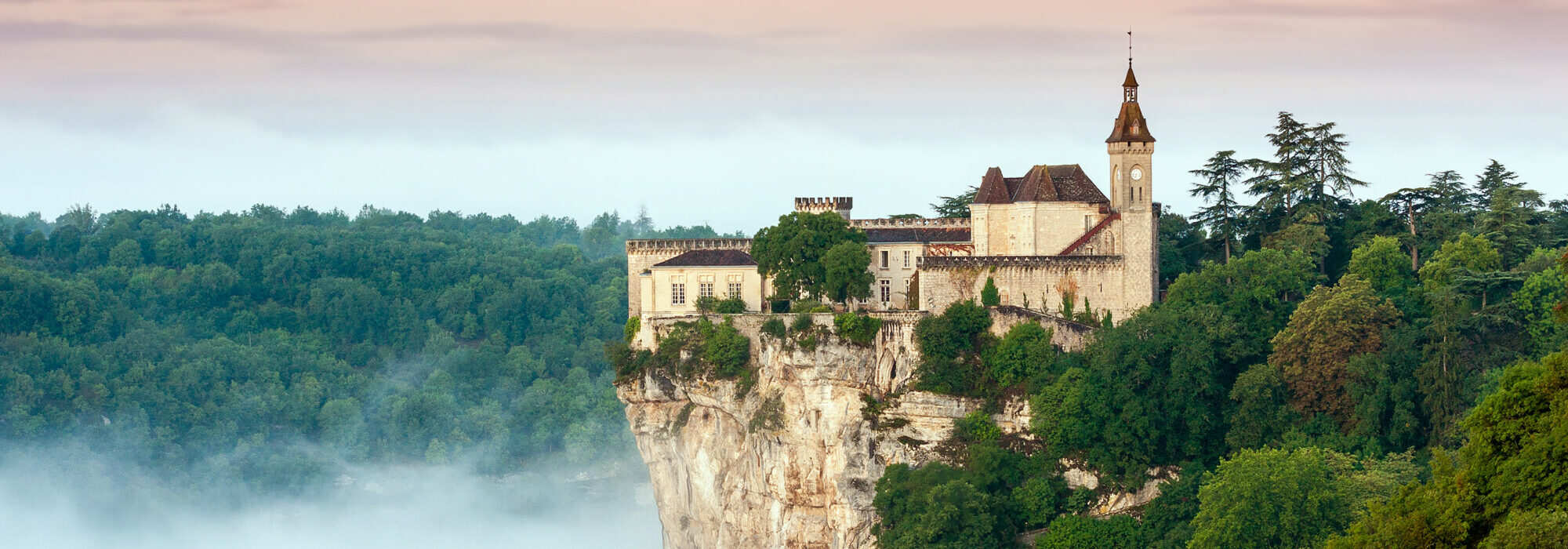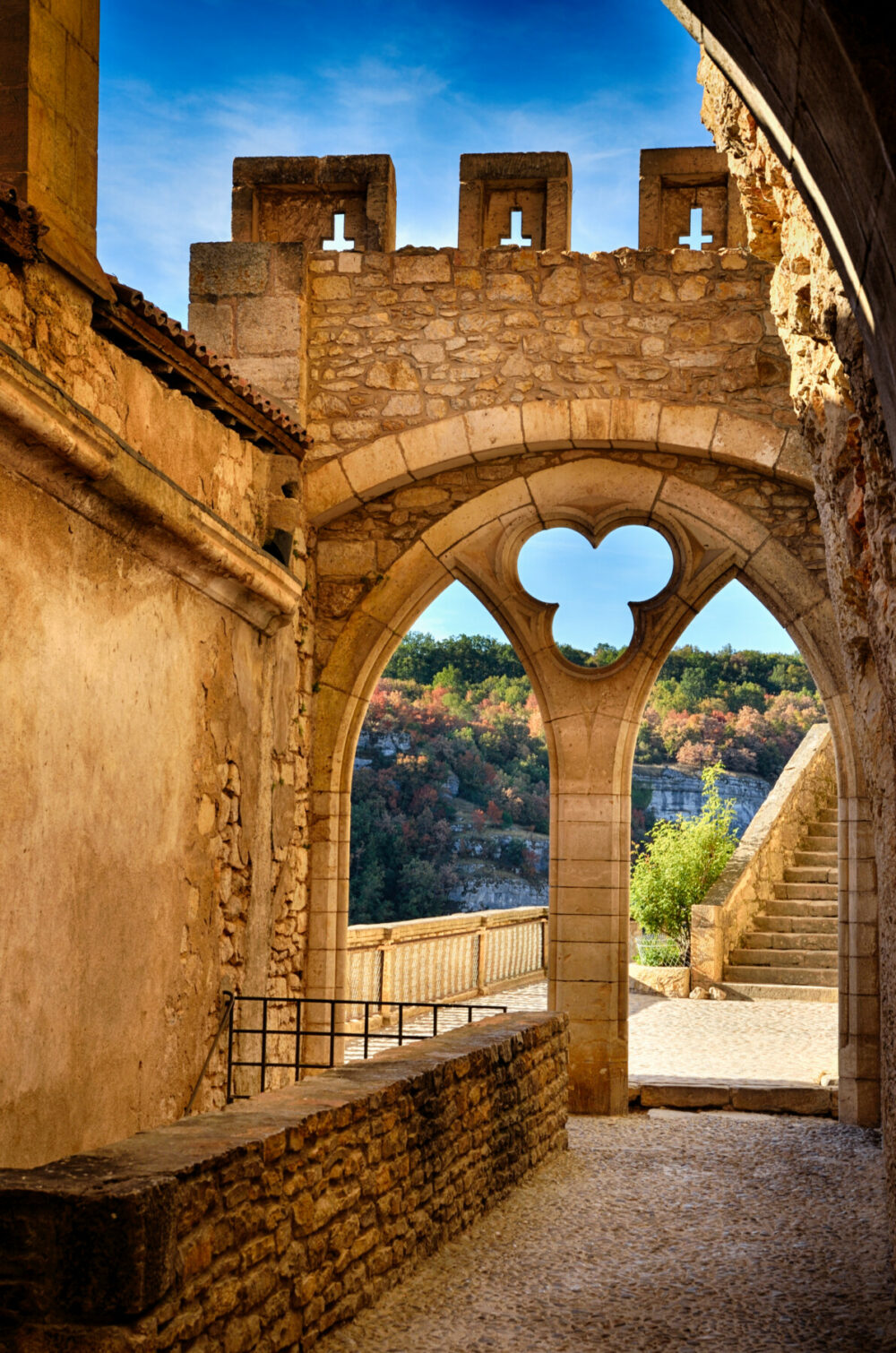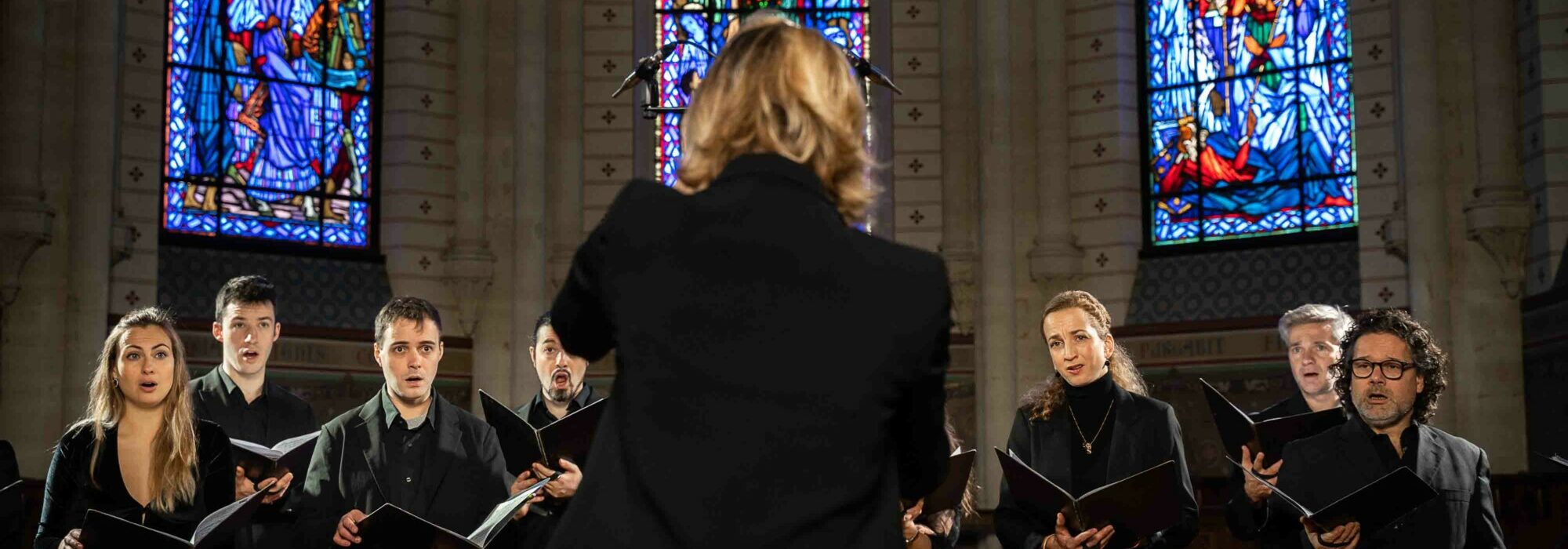
Rocamadour is first and foremost a site with an exceptional history, where creations from all eras interact: from the cave art that adorns the valley’s caves to the medieval town where centuries of history are superimposed, the vertigo of this grandiose space has questioned mankind for thousands of years. The mountain seems to have kept the echo of these lives and hopes, the memory of those who have gone before us, like a call to give of ourselves the best we have.


When Francis Poulenc first went to Rocamadour in August 1936, he was deeply moved by the news of the death of his colleague Pierre-Octave Ferroud. The atrocious decollation of this musician so full of strength had struck him with shock. Thinking of the insignificance of the human envelope, he was once again drawn to the spiritual life.
In the sanctuary city, facing the Black Madonna, he was transported by the spiritual and mystical atmosphere of the place. This experience had a profound effect on his faith and his musical composition, as he himself wrote: “Alone, in front of the sinless Virgin, I suddenly received the indisputable sign, the stab of grace in my heart”.
That same evening he began his Litanies à la Vierge Noire, the first sacred work in his repertoire, which he composed in just seven days. Poulenc was able to transcribe the spirituality and fervour of devotion to the Virgin in a style that was both intense and gentle, alternating Gregorian chants with modern sounds.
His frequent visits to Rocamadour also inspired some of his most memorable works, such as the Salve Regina (1941), the Stabat Mater (1950), the Quatre motets pour un temps de Noël (1952) and his opera Dialogue des Carmélites (1957). Poulenc’s sacred music, often described as a mixture of lightness and depth, perfectly reflects the composer’s relationship with Rocamadour, where the beauty of the place blends with a profound spirituality.
Closer to home, it was Francis Poulenc who, one day in August 1936, found himself so moved as he crossed the threshold of the chapel that he began that very evening to write Litanies à la Vierge Noire, one of his most poignant works, cultivating a very special relationship with Rocamadour to the end of his life. Rocamadour – Musique sacrée responds to this same call, defending music that is both spiritual and open to all, a vision of art that lifts us up.
Rocamadour – Musique sacrée creates a striking dialogue between the beauty of the music and the beauty of a site with a spiritual dimension, going far beyond the framework of a classical concert to become an experience that takes us all in, in the image of Francis Poulenc. The vertigo of the mountain gives a unique resonance to the work of mankind, but the reverse is also true. Through this cultural and artistic approach, Rocamadour questions our humanity, our link to the past and the future, creating those moments of grace that we urgently need today.
To promote this vision, Rocamadour – Musique sacrée is developing three ambitious projects, forming a structure that is both complete and complementary. First, there’s the festival, which in less than 20 years has established itself as an international event, attracting more than 10,000 spectators and musicians of the highest calibre. Today, the call of Rocamadour also shines through the work of Ensemble la Sportelle, an a cappella vocal ensemble associated with the mission of Rocamadour – Musique sacrée, and through a record label that promotes artists and projects beyond our borders.


The Rocamadour – Musique sacrée project is an ambitious undertaking to celebrate the richness of Western sacred music. It highlights the different elements that make up this music, placing the voice at the heart of its activity.
Considered to be one of the most powerful and expressive instruments in music, the voice plays an essential role in transmitting emotions and creating the unique atmosphere of Rocamadour. The festival began in 2006 with a choral singing course open to all. Today, there are three summer courses to introduce over 200 people to the art of singing. The festival features a host of renowned soloists and vocal ensembles, including the Tenebrae Choir, Sabine Devieilhe, Lea Desandre, Le Concert Spirituel and Les Éléments.
The creation of Ensemble la Sportelle confirms the importance of the voice, offering collaborative work in a chamber music setting, often a cappella, with one or two singers per voice. Its workshops, open to all, complement the vocal training offered by Rocamadour – Musique Sacrée.
Last but not least, the label is also putting the spotlight on vocal music, with works by Hildegard von Bingen performed by mezzo-soprano Anne Bertin-Hugault, and French mélodie with Contes Mystiques by tenor Enguerrand de Hys.
Rocamadour – Musique sacrée is a true vocal journey, celebrating the richness of Western sacred music and placing the voice at the heart of this unique musical experience.


